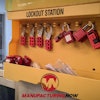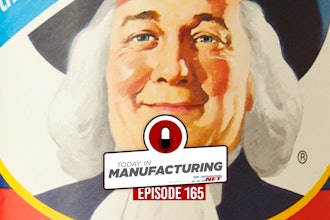When thinking about procurement strategies to deal with the volatility and rapidly rising price of commodities, there are many considerations.
Commodities are a big challenge for all food companies, and price increases aren't making it easier. But while consumers may think all rising costs are being passed on to them, they would be surprised what significant portion of these costs are being offset by the hard work of buyers and suppliers working together to find new efficiencies in the supply chain.
Corn, wheat, fats and oils; all of these are obvious examples of food commodities with significant price volatility over the last few years.
Food manufacturers are further impacted by the cost of non-food commodities. Steel is a good example. If you're a food manufacturer using steel for packaging, whether it's domestic or international supply, you've seen price increases over the last two years upwards in the 20 percent range, and that's having a very large impact on the cost of your goods sold.
So How Do You Control Costs?
Depending on the industry, anywhere between 20 to 80 percent of the cost of the goods sold is based on cost that the buying company cannot directly control; it's tied up in raw material and commodity costs.
What companies can control are the other costs that go into their supply chain beyond the commodity: manufacturing costs, transportation costs, even labor costs. Focusing on these areas of cost control is a strategy being used diligently in light of commodity pricing challenges.
So how can buyers work more collaboratively with their supply base to gain control of costs? The supply base knows their business very well and they have unique capabilities to innovate and drive efficiency into the supply chain. A food company, hard hit by the rising cost of commodities, for example, and with many products packaged in steel cans, can look closely at their manufacturing processes to find cost reduction opportunities.
Let's say they:
- Buy steel coil from their suppliers, both domestically and internationally
- Cut that steel coil into sheets in one of their manufacturing plants
- Laminate the steel sheets
- Ship the sheets to another plant that produces the cans
- Ship those cans to the food production facilities to be filled with the final product
They should now look at different ways they can work with their suppliers to drive out costs beyond the commodity cost. They may ask their suppliers to:
- Laminate the steel coil before it is shipped to the manufacturer
- Identify capabilities in the supply base to provide pre-cut steel sheets, perhaps even pre-cut, pre-laminated sheets
- Separate the cost of the steel and freight, so that the buyer can understand where their freight contracts provide a better and more cost-effective shipping option
Expressive, Collaborative, and Innovative
In a real life scenario, a food company undertook the previously described advanced sourcing exercise and found that their steel suppliers had great capability to provide them with additional service and value where the suppliers were more efficient than the food company could be at performing some of that production process. Now, this food company has shifted from buying steel coil from their supply base and manufacturing the steel cans in house, to working with the supply base to do the cutting and lacquering for them. That supply base is providing pre-cut, pre-lacquered sheets directly to the food company's can manufacturing plant, cutting out some of those inefficient processes the manufacturer was performing, and thereby reducing costs.
On top of this, the food company was able to use advanced sourcing to identify a number of transportation lanes where they had better freight rates than their suppliers did. Though these moves didn't completely offset the rising cost of steel or the rising cost of their food ingredients, the results were excellent.
Applying the Right Technology Solution
Technology can be very helpful in sorting out the various parameters going into such strategic maneuvers. Advanced sourcing software allows buyers to focus on opening up a marketplace for more expressive and creative bid proposals from their suppliers. When enabled by the right tool, a more expressive, flexible marketplace is available to suppliers, and both parties can more closely collaborate in the search for efficiency and cost reduction.
Procurement professionals at a range of food companies are today using advanced sourcing technology to tap into their supply base to find other ways, beyond just the cost of the material or the commodity, that they can reduce cost within their own business. It's the next solution frontier as business requirements demand more than just basic auction and RFP approaches.
CombineNet is an advanced sourcing company whose customers have sourced more than $70B, representing more than $7B in implemented savings.






















